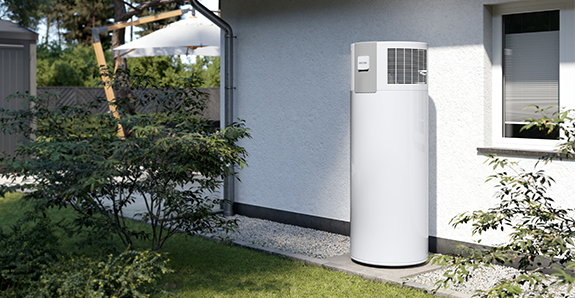Thursday, 08/01/2026 | 13:26 GMT+7
For about 70 years, most electric hot water systems (HWS) in Australia have been turned on to heat overnight through the use of “ripple control” on a separate controlled load circuit in homes. This was done to soak up “excess” coal-fired generation and effectively created a baseload overnight demand. Now household rooftop solar systems collectively produce more electricity than any single coal-fired power station in Australia, and some water heating has moved to the middle of the day to soak up this abundant solar generation.

Hot water systems in Australia should be dynamically managed, to heat when there is abundant renewable electricity.
This can be done in two ways:
There have been changes to daytime operation for ripple control by some distribution networks on some controlled load tariffs. Passive management is a partial solution to unlocking the flexibility available in HWS but as we move rapidly towards 82% renewable generation by 2030, it will be more valuable to have dynamic management or “smart” HWS. For example, at times in Victoria’s winter, when solar generation is lower than usual, it may be more cost-effective to heat water when onshore – and from 2032 – offshore wind power generation is available.
Researchers at the University of Technology Sydney developed four scenarios for the electrification of domestic hot water with flexible demand potential (see table). Under the Rapid Electrification scenario, with no sales of residential gas hot water after 2025, all HWS are electrified and able to be dynamically managed by 2035. Consumers would save of up to $6.7 billion a year by 2040, with 22 gigawatts (GW) or 45 GW hours per day of flexible demand available, roughly two-thirds of peak demand.

Table: Flexible demand capacity and depth scenarios for 2040.
However, there are no requirements for HWS sold in Australia today to be smart. A consumer looking to buy a new heat pump HWS can’t rely on a Minimum Energy Performance Standard (MEPS), as there is for electric storage HWS, but even these standards date from 2012. Heat pump HWS are three to four times more efficient than resistive electric HWS, and their purchase is supported by subsidies in many states. On 19 July 2024, Energy Ministers agreed to introducing MEPS for heat pump HWS a high priority, which is a great step, but flexibility considerations were not part of this decision.
Victoria is the only state to require any appliance flexibility requirements – a timer – to qualify a heat pump hot water subsidy. The lack of requirements for subsidised HWS to be “smart” is a missed opportunity to create cheap, flexible demand that grows with every subsidised hot water system installed.
A new briefing note from the Institute for Energy Economics & Financial Analysis (IEEFA) makes several recommendations to support the uptake of smart HWS, including:
These recommendations are not about whether or by whom any HWS will be managed, but whether new HWS are smart. Any passive or dynamic management of a new HWS will be the owner’s choice. Most HWSs have been passively managed by ripple control for about 70 years so this is not a new concept for distribution networks or consumers.
It is important for these HWS requirements to be in place as soon as possible given how fast households are electrifying. The UTS research shows there is a $6.7 billion missed opportunity if newly electrified HWS are not able to be used as a flexible resource.
According to ieefa.org








 Webinar 2: “Financial Support for Energy Efficiency Enterprises – Opportunities and Challenges”
Webinar 2: “Financial Support for Energy Efficiency Enterprises – Opportunities and Challenges”
 Vietnamese enterprises achieve green growth and cut costs through energy efficiency
Vietnamese enterprises achieve green growth and cut costs through energy efficiency
 Capacity building for participating financial institutions in Ho Chi Minh City
Capacity building for participating financial institutions in Ho Chi Minh City
 Strengthening capacity for energy management officers of local government agencies
Strengthening capacity for energy management officers of local government agencies
 Steel Enterprises Saving Energy and Enhancing Competitiveness
Steel Enterprises Saving Energy and Enhancing Competitiveness
 Strengthening Sales and Marketing Capacity for Energy Efficiency Equipment and Solution Suppliers
Strengthening Sales and Marketing Capacity for Energy Efficiency Equipment and Solution Suppliers
 Capacity Building for Energy Officers of Government Agencies in the Central region
Capacity Building for Energy Officers of Government Agencies in the Central region